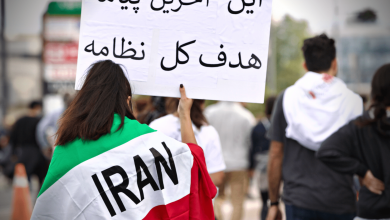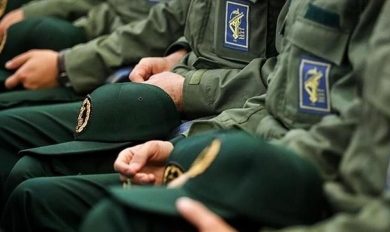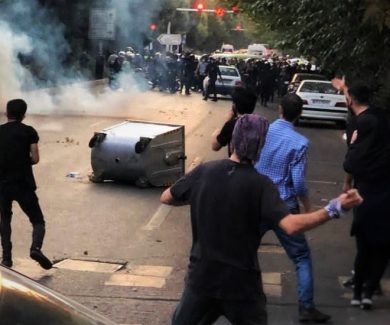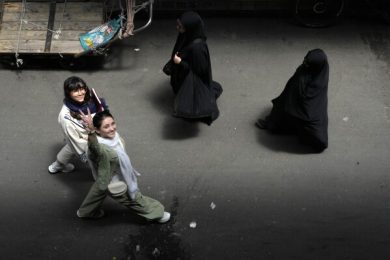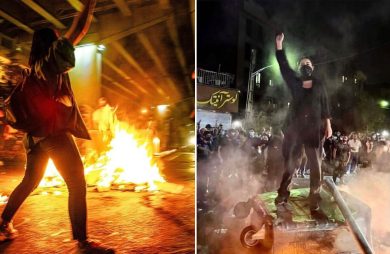In the face of systemic repression, Iranian women have long turned to art as a powerful form of resistance. While protests and political activism often take center stage, the creativity of Iranian women—through music, poetry, painting, film, dance, and fashion—has become a crucial means to challenge the regime’s control and speak truths that are otherwise silenced.
Under the Islamic Republic, and particularly with the IRGC’s involvement in enforcing moral and cultural restrictions, creative expression by women is heavily censored or criminalized. Yet Iranian women continue to produce art that reclaims identity, honors victims, and amplifies dissent both at home and in exile.
1. The Role of Art in Iranian Women’s Resistance
Cultural Suppression as a Political Tool
From compulsory hijab laws to bans on women singing solo in public, the Iranian regime has weaponized cultural and religious norms to suppress women’s visibility. The IRGC enforces these policies through surveillance, arrests, and intimidation.
In response, art becomes a revolutionary act—a way for women to reclaim their agency and resist cultural erasure.
2. Forms of Artistic Resistance
A. Visual Arts and Street Murals
Graffiti and murals have flourished as a covert yet powerful form of protest. Street artists in Tehran and other cities have created stunning images of unveiled women, symbolic birds, or female martyrs of the protests.
These works often appear overnight and vanish quickly under pressure from authorities, but their impact resonates through photos shared on social media.
B. Music and Song
Despite a ban on women singing solo before mixed audiences, Iranian women continue to create music:
• Many turn to underground studios, or post anonymously online.
• Songs like Baraye by Shervin Hajipour, which became the anthem of the 2022 protests, include lyrics inspired by women’s voices and struggles.
C. Film and Theater
Iranian female filmmakers such as Marzieh Meshkini, Rakhshan Bani-Etemad, and Nahid Persson have used cinema to highlight gender injustice, state violence, and the female experience under dictatorship.
Even inside Iran, short films made on smartphones by women activists are circulating, telling the untold stories of protest, arrest, and resilience.
D. Dance and Body Movement
Public dancing by women is illegal under Iran’s current laws. Yet women have used dance videos posted online—often veiled in symbolism—as an act of defiance. These performances become expressions of freedom, protest, and control over one’s body.
E. Fashion and the Hijab
Iranian women have turned the act of removing the hijab into both a political statement and a visual form of protest. Through stylized photography, art installations, or even fashion design, women are reinterpreting traditional dress codes to express autonomy and resistance.
3. Notable Artists and Creative Leaders
Masih Alinejad
Journalist and activist, she launched My Stealthy Freedom, a campaign where Iranian women share photos of themselves without the hijab. While not traditional “art,” this visual movement combines photography and storytelling to challenge enforced dress codes.
Niloofar Rahmani
An underground street artist who gained attention for her stencil work that highlights the brutality of the morality police and the IRGC.
Golshifteh Farahani
Actress and musician in exile, she has become a cultural ambassador of resistance, using her platform to elevate the voices of Iranian women globally.
4. Art in Exile: The Diaspora as a Cultural Bridge
Many Iranian women have fled due to threats or arrests and continued their creative resistance abroad. These exiled artists play a crucial role in:
• Connecting Iran to the global art and human rights community
• Documenting abuses through film, painting, or digital media
• Creating safe platforms for others to share their work anonymously
From Berlin to Los Angeles, Iranian art collectives and galleries showcase politically charged work that keeps international attention on Iran’s repression.
5. Risks and Repercussions
Creating and sharing protest art in Iran comes with serious risks:
• Arrest and imprisonment
• Interrogation and confiscation of personal belongings
• Social media surveillance by the IRGC Cyber Unit
Yet many continue, believing that silence is more dangerous than expression.
6. Global Solidarity Through Art
Art has helped Iranian women connect with global feminist and human rights movements. Campaigns like:
• #WomenLifeFreedom artwork exhibitions
• International screenings of Iranian feminist films
• Collaborations with Western artists to amplify Iranian voices
These actions foster solidarity and bring Iran’s fight for freedom to the global stage.
7. Art as Healing and Empowerment
Beyond resistance, art provides emotional healing. Women who’ve endured trauma—through prison, assault, or loss—use creativity as a way to process pain, build resilience, and reclaim their narrative.
In women-led art therapy groups, both in Iran and among the diaspora, painting, writing, and performance have become tools of survival and strength.
Conclusion: The Brushstroke of Revolution
In Iran, where a regime tries to control even how women dress, speak, or move, art becomes one of the purest forms of rebellion. It is emotional, symbolic, and impossible to fully censor.
Iranian women artists are not only resisting oppression—they are documenting history, shaping culture, and inspiring generations.
Join Our Newsletter!
Stay informed with the latest updates, news, and ways to take action in the fight for justice and global security. Sign up now to get updates delivered straight to your inbox!

